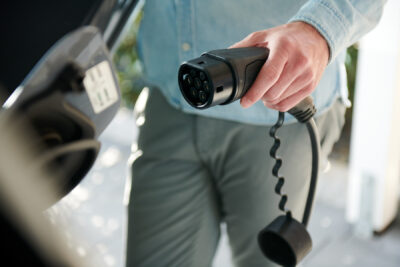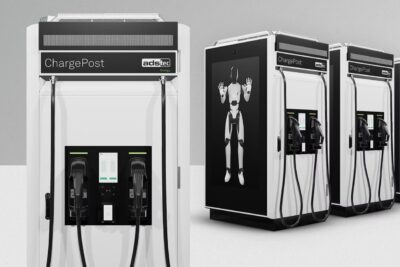845,000 charging points in the EU – but hardly any for trucks
The EU Alternative Fuels Infrastructure Regulation (AFIR) stipulates that a minimum number of charging facilities must be gradually built in the trans-European transport network (TEN-T). According to an internal survey reported by the Deutsche Verkehrs-Zeitung, the EU Commission expects that the member states will be able to establish the minimum network of charging stations for electric vehicles prescribed by the AFIR by 2030. Most states are likely to achieve this even earlier than 2030.
By the end of 2024, the number of charging points in the European Union will have reached 845,000, 180 per cent more than in 2021. The EU Commission has also calculated the charging capacity per station. It has risen from an average of 26 to 33 kW per charging point. According to the EU Commission, there are over 15,000 ultra-fast chargers in the EU with an output of over 350 kW.
However, the biggest problem from the EU’s point of view is the availability of charging points suitable for electric trucks. There are already 13,500 of these vehicles registered in the EU – and there is a tremendous political desire to quickly electrify heavy goods transport. Although electric trucks can use the fast-charging stations with their CCS plugs, many charging stations are simply not designed for the dimensions of trucks. At many locations, trailers and semi-trailers still have to be unhitched to reach the charging stations – but even if a trucker is willing to do that, there are not always enough parking spaces for the trailers and semi-trailers.
According to the AFIR, however, there should be over 20,000 charging points suitable for trucks along the trans-European transport network (TEN-T) by 2030. To ensure that this expansion progresses quickly, it will be co-financed by the EU, primarily through the Alternative Fuels Infrastructure Facility (AFIF) funding programme, which has a budget of two billion euros. In the last funding round at the beginning of February, Milence, for example, was awarded more than 111 million euros for the construction of 71 truck charging hubs in Belgium, Germany, Denmark, France, Italy, the Netherlands, Austria, Poland, Sweden and Spain. E.ON Drive Infrastructure (EDRI) was awarded €45 million for the construction of 427 truck charging points and 932 car charging points.
At the same time, the EU Commission criticised the bureaucratic hurdles for the expansion of the charging infrastructure. “Planning and authorisation procedures should not take years, but months,” the DVZ quotes the authorities in Brussels. “Competition is the best way to keep costs under control. Authorities must scrutinise their practices when awarding concessions.”
AFIR stipulates that between 2025 and 2030, there must be a fast-charging facility for heavy goods vehicles at least every 100 kilometres along the TEN-T roads and every 60 kilometres along the core routes. There are also targets for charging facilities in secure truck parks and in urban areas. The EU states must set up hydrogen refuelling stations in every urban transport hub and every 200 kilometres along the TEN-T core network. The Commission states that the market must determine the optimal refuelling and charging network density beyond the minimum requirements.
According to the AFIR, there are two main objectives for the expansion of charging infrastructure in the EU: fast charging stations for cars and light commercial vehicles with a capacity of at least 150 kW must be installed every 60 kilometres on the routes of the trans-European transport network (TEN-T). Furthermore, charging stations for heavy goods vehicles with a minimum output of 350 kW must be installed every 60 km on the routes of the TEN-T core network and every 100 km in the larger TEN-T overall network. Full network coverage must be achieved in both cases by 2030.
dvz.de (paywall; in German)





1 Comment